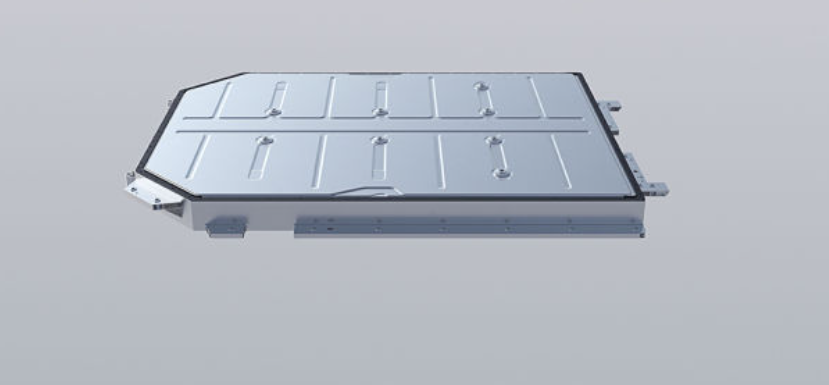Author | Wang Lingfang
Editor | Zhu Shiyun
Manganese-based cathode materials are now seeing their second peak.
The first time manganese-based batteries were highly praised was during the popularity of the Nissan Leng Feng.
The second-generation product of manganese-based materials, Lithium Iron Phosphate Manganese, has entered the pre-production period and has gained much attention in the industry.
Manganese has become a frequently mentioned term in the electric vehicle industry, as seen in the fourth Global New Energy and Intelligent Vehicle Supply Chain Innovation Conference at the Electric Vehicle 100-People Conference.
At the conference, companies and experts such as Innovation Electrochemical Co., Ltd., CATL, and Lishen Battery talked about the progress of Lithium Iron Phosphate Manganese batteries.
For example, by 2023-2024, Rui Prulanjun will achieve an energy density of 500Wh/L for Lithium Iron Phosphate Manganese, supporting a driving range of 800 km for pure electric vehicles; Innovation Electrochemical Co., Ltd has reduced the amount of lithium used by 15% with Lithium Iron Phosphate Manganese batteries.
In addition to the aforementioned companies, several power battery manufacturers, such as Contemporary Amperex Technology (CATL), BYD, and EVE Energy, have started relevant research and development and layout for Lithium Iron Phosphate Manganese batteries. Among them, the Lithium Iron Phosphate Manganese of several companies has passed the battery pilot production stage in the first half of this year and is currently providing samples to automakers for testing.
Contemporary Amperex Technology (CATL) plans to start producing M3P batteries in the second half of this year.
Another potential product, rich lithium manganese-based batteries, is still in the development stage. Currently, during the experimental stage of rich lithium manganese-based materials, 400mAh/g has been achieved, and batch production is expected to reach 400mAh/g, with battery energy density reaching 400Wh/kg.
Pros and Cons of Lithium Iron Phosphate Manganese are Obvious
Currently, manganese is mainly used in lithium-positive electrode materials as Lithium Manganese Oxide and Nickel Cobalt Manganese Oxide (ternary materials). With the advancement of material modification technology, the development of manganese-based cathode materials, Lithium Iron Phosphate Manganese, and rich lithium manganese-based technology are rapidly developing.
Lithium Iron Phosphate Manganese has become a transition product between Lithium Iron Phosphate and ternary batteries, characterized by a higher energy density than Lithium Iron Phosphate and lower cost than ternary batteries.
Lithium Iron Phosphate Manganese has the same olivine-type structure as Lithium Iron Phosphate, which is more stable during the charge-discharge process. Even if all lithium ions are embedded during the charging process, structural collapse will not occur, making it safer.
Specifically, the pros and cons of Lithium Iron Phosphate Manganese are very obvious.
First, it has better energy density. The voltage platform of Lithium Iron Phosphate Manganese is as high as 4.1V, which is higher than the 3.4V of Lithium Iron Phosphate. The high voltage brings about an increase in energy density, with a theoretical energy density 15%-20% higher than that of Lithium Iron Phosphate, which can basically reach the level of ternary batteries, such as NCM523.
Second, it has better low temperature performance. Lithium Iron Phosphate Manganese has better low temperature performance than Lithium Iron Phosphate, with a capacity retention rate of about 75% at -20℃.
Third, it has the characteristics of Lithium Iron Phosphate batteries and is safer than ternary batteries. Lithium Iron Phosphate Manganese has an olivine-type structure, which is safer and more cycle-stable than ternary batteries.## Fourth, abundant manganese ore resources lead to lower cost
The cost of manganese iron phosphate lithium is only increased by around 5%-10% compared to lithium iron phosphate, taking into account the increase in energy density of manganese iron phosphate lithium in battery installation cost, the cost per watt-hour of manganese iron phosphate lithium is slightly lower than lithium iron phosphate and significantly lower than ternary batteries.
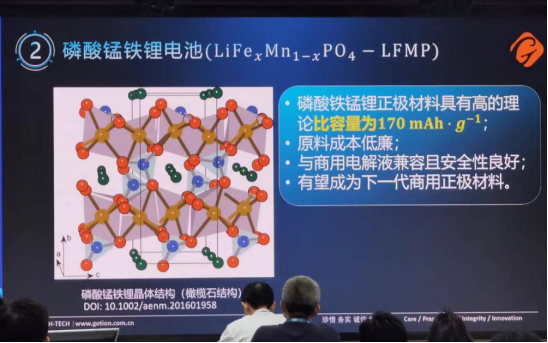
However, the disadvantage of manganese iron phosphate lithium batteries is their lower conductivity and lithium ion diffusion speed, which makes it difficult for their capacity advantage to be fully utilized and their rate performance is relatively poor.
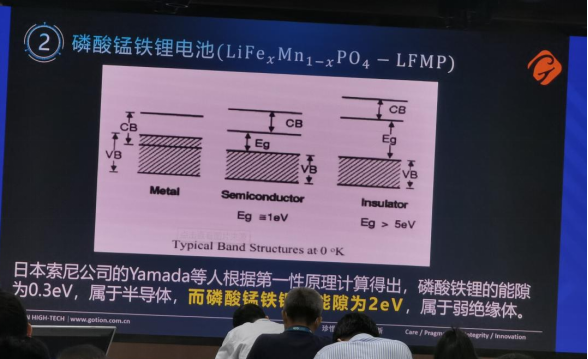
Nevertheless, according to Xu Xingwu, deputy dean of the Engineering Research Institute of Guoxuan High-tech Power Energy Co., Ltd. in Hefei, manganese iron phosphate lithium is essentially an insulator. “Sony Corporation in Japan has calculated that the band gap width of general lithium iron phosphate materials is about 0.3 eV, which is a semiconductor, but manganese iron phosphate lithium has a band gap width of 2 eV, which is basically an insulator that does not conduct electricity.”
Improvement plan: encapsulation, doping, and nanomaterial production
Compared with lithium iron phosphate batteries, the addition of manganese elements will lead to a decrease in the cycling life of manganese iron phosphate lithium batteries due to the dissolution of manganese. In view of the above reasons, when manganese is used as a single active material, doping, carbon coating, and nanomaterial technology are commonly used to modify manganese iron phosphate lithium materials in order to improve their performance.
Xu Xingwu mentioned nanomaterial production, “if you don’t produce nanomaterials, the conductive network cannot be formed, so you have to use nanomaterials. But once you use nanomaterials, problems arise. It is difficult to blend with slurry and not easy to coat. It is difficult to use manganese iron phosphate lithium batteries alone, and many problems need to be solved.”
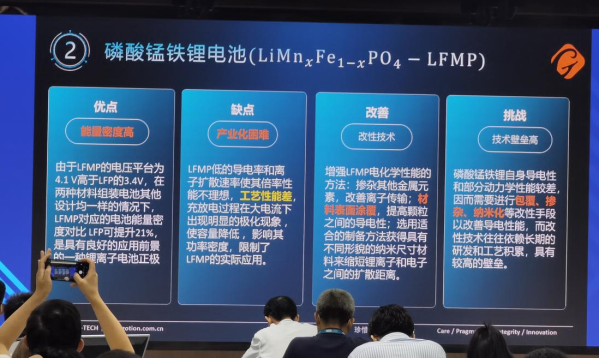
Guo Qixin, deputy general manager of the Vehicle Products Center of Innovation of China Aerospace Science and Technology Corporation, introduced the company’s solution, “firstly, we consider how to design gradients for manganese elements. It may not be uniform inside and outside, with more on the outside and less on the inside, making the entire conductive pathway more smooth.”## The Past and Future of Manganese-based Batteries
The second-generation manganese-based battery, such as the popularly discussed lithium iron phosphate (LFP) battery, is a transitional product that incorporates a variety of other transitional metal elements to achieve a better balance between energy and conductivity. Additionally, encapsulating the battery on the interface addresses both the conductivity issues on the surface and the life attenuation issues caused by phase changes in the material itself.

Ruyi Pullan Jun also mentioned his goal of achieving a 500 Wh/L energy density and an 800 km driving range for his lithium iron phosphate battery by 2023-2024.
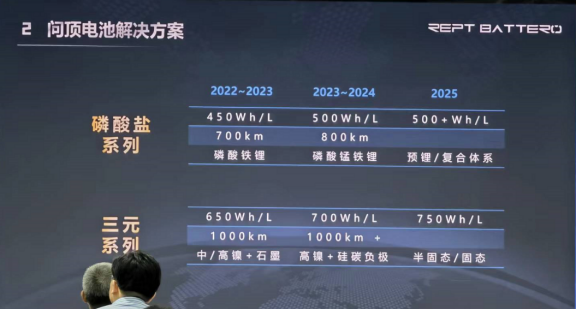
In addition to the companies mentioned above, Ningde Times’ M3P battery is also a lithium iron phosphate battery, referred to as a triad in the phosphate system. In November 2021, Ningde Times invested in Lithium Energy Holding, Ltd., and held a 60% stake. Lithium Energy Holding, Ltd., which has an annual production capacity of 2,000 tons, is mainly engaged in producing lithium iron phosphate materials.
Xiao Chengwei, a researcher at the 18th Research Institute of China Electronics Technology Group, has suggested that mixing lithium iron phosphate with ternary materials can improve the safety of ternary material batteries, or mix lithium iron phosphate with iron phosphate to increase the energy density of iron phosphate.
The Past and Future of Manganese-based Batteries
The current hotly discussed LFP is a second-generation manganese-based battery that has been modified via the addition of materials.
The first generation manganese-based battery was the lithium manganese battery. The lithium manganese positive electrode material was invented 20 years ago and was once used in the first generation of electric cars in Japan and South Korea. Japan and South Korea primarily relied on doped single crystal particles for their lithium manganese batteries. At the time, AESC was the leader in this industry.
The early internet-famous Nissan Leaf, which was known for its battery safety, had obvious drawbacks due to its low energy density; its driving range was only 200 kilometers. However, these days, AESC is primarily developing ternary batteries.
Lithium iron phosphate is not a new direction. As early as 2013, BYD chose LFP as the upgrade for iron phosphate and began seeking patents. However, because of the subsidy policies’ emphasis on higher energy density and BYD’s inability to fix issues such as low cycling life and high internal resistance in lithium manganese batteries, this line of development did not become mainstream, and BYD stopped exploring lithium manganese batteries for a time.
However, since 2020, BYD has started to have records of relevant patent applications.

Guoxuan High-tech is also an enterprise that has been researching and developing lithium iron phosphate batteries early on. According to Xu Xingwu, Guoxuan High-tech was also developing lithium iron phosphate batteries in 2013, and respectively obtained new product certificates for lithium iron phosphate batteries in 2014 and 2017.
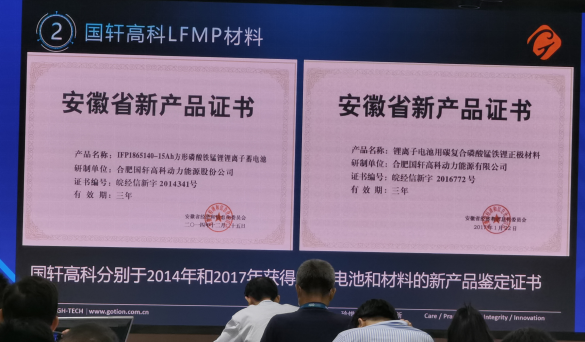
According to Guo Qixin, as early as 2014, Zhongchuang Xinhang began to try and explore the path of high manganese.
“We had already made a complex and composite material system of lithium iron phosphate and ternary battery in 2014, which had been put into production. We made an RV at that time, which actually had a considerable shipment volume and ran on the market for a long time. This was our earliest exploration of manganese iron or manganese-based batteries. From 2016 to 2017, when we focused on the development of ternary cores, we deeply realized the importance of manganese in the material system,” said Guo Qixin.
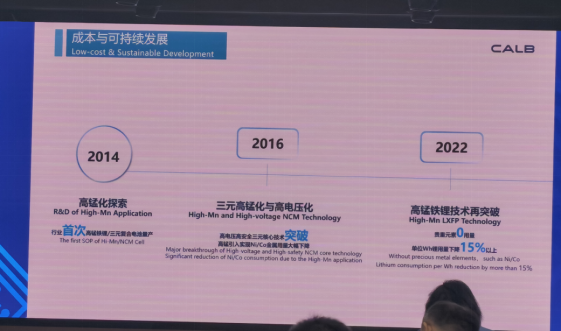
In 2021, against the background of soaring raw material prices, lithium iron phosphate batteries have once again received attention from enterprises, and there are many reports on relevant deployments.
The highly anticipated positive electrode material to follow is rich lithium manganese-based.
Rich lithium manganese-based materials have higher specific capacity, lower cost and better safety.
The positive electrode material of rich lithium manganese-based can be regarded as composed of two components, Li2MnO3 and LiMO2. These two structural components are uniformly compounded into rich lithium manganese-based materials at the atomic scale. Rich lithium manganese-based materials are mainly composed of inexpensive manganese elements and contain less precious metals. Compared with commonly used lithium cobalt oxide and nickel cobalt manganese ternary positive electrode materials, they not only have lower costs, but also have better safety.
Although rich lithium manganese-based materials have outstanding advantages, there are also many shortcomings, such as irreversible initial capacity loss, poor rate performance, and voltage attenuation during cycling processes.Xu Xingwu said frankly that there are both advantages and difficulties in rich lithium manganese-based materials. “Professor Xia Dingguo from Peking University can achieve 400mAh/g, but there is a problem of voltage attenuation and oxygen loss during the cycle, and there is no better way yet, the challenge is still quite large.”
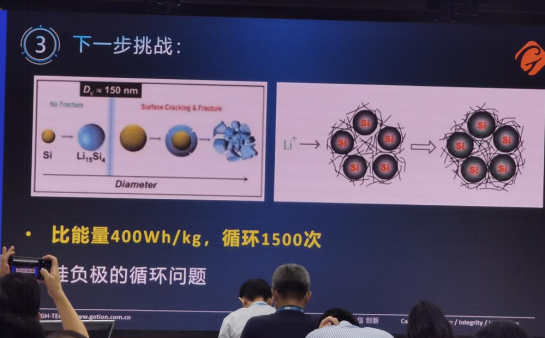
Xiao Chengwei believes that after mass production of lithium manganese-based materials, the battery can probably achieve a level of 300mAh/g, which can reach 400Wh/kg by matching with silicon-carbon.
Currently, many companies are laying out in the field of rich lithium manganese-based materials. According to relevant company announcements, companies such as Capchem and ASC Tech have advanced their research and development of rich lithium manganese-based materials, and have entered the small-scale testing stage, and actively cooperate with their customers to carry out product performance optimization and process amplification experiments on the company’s existing production lines. In addition, companies such as VSPC, Zhongwei Stock, Kunshan T-tech, Tianyuan Shares, and Do-Fluoride have also launched research and development projects of rich lithium manganese-based materials (precursors) and are actively exploring the feasibility of commercialization.
According to the research department of CITICS Securities, new manganese-based positive electrode materials are rapidly rising, and the increase in its penetration rate is expected to increase the amount of manganese used in the lithium battery industry by more than 10 times from 2021 to 2035, and it is expected to become one of the main positive electrode materials for power batteries.
This article is a translation by ChatGPT of a Chinese report from 42HOW. If you have any questions about it, please email bd@42how.com.
